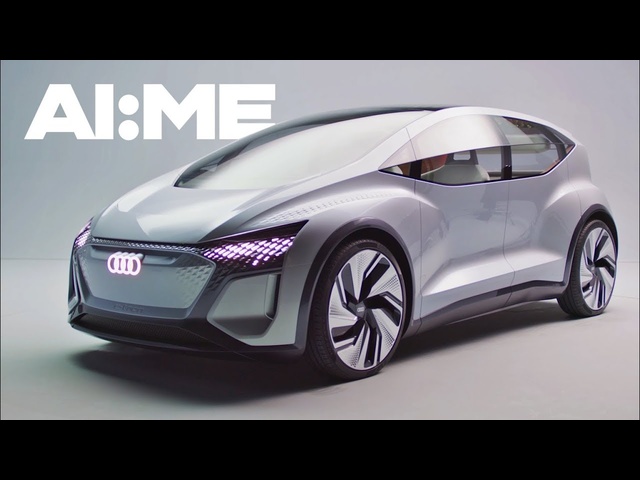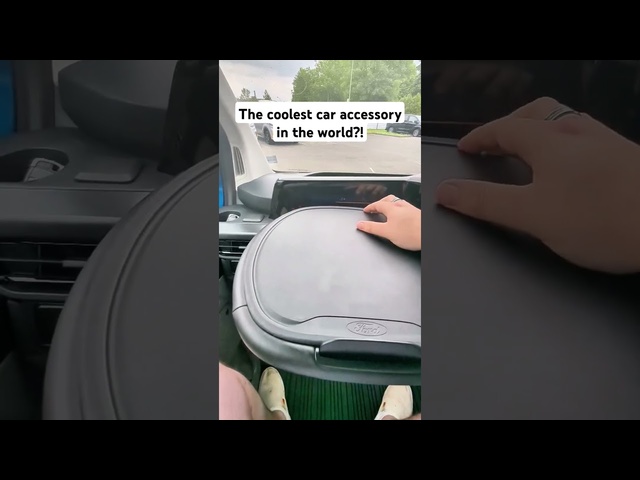Views: 320111
Polestar 2 Review: Volvo Takes Aim At TESLA | Carfection 4K
The Polestar 2 is the first fully-electric car from the Volvo spin-off brand and Henry Catchpole took it for a spin to see if it's worth the hype. Could it beat Tesla at their won game?
Subscribe for more Carfection videos: http://bit.ly/1V1yFYX
Don't forget to hit the ????
Like on Facebook: http://on.fb.me/1RvTdL4
Follow on Twitter: http://bit.ly/1JUAgiI
Instagram: https://www.instagram.com/carfectionfilms/
Most of the time voice recognition is the sort of feature that you only try twice. Once out of curiosity, then a second time just to make sure it really is as hopeless as you thought. To be fair to her, Siri can be pretty good, but most of the manufacturer-based voice-recognition systems are more trouble than they're worth. Which is a shame, because being able to control things without taking your eyes off the road or your hands off the steering wheel is a real boon in a car.
It was with this sort of pessimism that I said, "Hey, Google" for the first time in the Polestar 2. Moments later, without so much as a quibble, I was being navigated to my home postcode. Then I said, "Hey, Google" again, this time more optimistically, and muted the nav's instructions (because I know my way home from five miles away). Heated seats on? No problem. Radio? If you insist.
One more thing on the navigation: When you enter a destination it automatically shows you how much battery charge you will have left when you arrive. This might sound simple, and in fact other electric cars have adopted this technology as well, but I think it will go a long way to alleviating the anxiety felt by anyone new to EVs. Google will also plan your route via charging stations if you wish or need. The claimed range from the 78-kilowatt-hour lithium-ion battery -- which can charge up to 80% in 40 minutes -- is 292 miles according to the European WLTP cycle (US EPA numbers are still unknown). The test wasn't long enough to assess how accurate it will be in the real world, so that will have to wait for another day, but it's promising.
Something that will obviously extend the range is regenerative braking and I loved this aspect of driving the Polestar 2. I've rarely been able to complete entire journeys without ever touching the brake pedal and it's a curiously pleasing experience. The regen can offer up to 0.3 g of braking force which is plenty in most situations, and while there is the option to tone-down the one-pedal driving from Standard to Light or even Off, I'm not sure why you would. Initially it can take a little acclimatization and there are a few jerky applications at first, but it's not as tricky as training your left foot to brake. In fact I think the extra-sensitive right foot would be beneficial in other non-electric cars -- who knew that a Polestar might improve your throttle control in a 911 GT3?
t's not all about lifting off the accelerator: Push it towards the vegan carpet (more of that in a moment) and you can achieve a 0-to-62-mph time of 4.7 seconds thanks to the two 150-kilowatt motors. That's not earth-shattering compared to certain other EVs, but it produces more than enough of that instant-electric-torque-freefall sensation to satisfy most people. Keep the pedal pinned and you can reach 127 mph, which is ample.
Anyway, back to the interior. As standard, the Polestar gets a vegan interior. And rather nice it is, too. It'll be interesting to see how well it fares with use over time, but straight out of the box the textures of the textiles are tactile and warm. Also standard is the panoramic roof, which helps give a nicely light and airy feeling to the cabin despite the relatively high shoulder line and reasonably shallow windows.
In fact the only notable option on the car that I drove is the Performance Pack. This costs $5,000 and provides you with 20-inch wheels (19s are standard), larger Brembo front brakes, gold-colored dust caps (be careful where you park...), gold-colored seat belts and Öhlins dual-flow manually adjustable dampers. It's very much about performance in the corners rather than performance in a straight line. The dampers will certainly feel surprisingly firm if you are expecting the Polestar to ride like a Volvo, but this firmness is largely in the secondary ride as it still soaks up bigger bumps with aplomb. And of course you can adjust them. The front shocks are relatively easy to tune but accessing the knob on the rears takes a bit more effort. Nonetheless, it can be done, and after switching the car to its comfort setting (18 clicks out of 22 on the front, 20 out of 22 on the rear) it does feel more accommodating on bumpy British roads. Still not plush, but slightly less bobbly.
Subscribe for more Carfection videos: http://bit.ly/1V1yFYX
Don't forget to hit the ????
Like on Facebook: http://on.fb.me/1RvTdL4
Follow on Twitter: http://bit.ly/1JUAgiI
Instagram: https://www.instagram.com/carfectionfilms/
Most of the time voice recognition is the sort of feature that you only try twice. Once out of curiosity, then a second time just to make sure it really is as hopeless as you thought. To be fair to her, Siri can be pretty good, but most of the manufacturer-based voice-recognition systems are more trouble than they're worth. Which is a shame, because being able to control things without taking your eyes off the road or your hands off the steering wheel is a real boon in a car.
It was with this sort of pessimism that I said, "Hey, Google" for the first time in the Polestar 2. Moments later, without so much as a quibble, I was being navigated to my home postcode. Then I said, "Hey, Google" again, this time more optimistically, and muted the nav's instructions (because I know my way home from five miles away). Heated seats on? No problem. Radio? If you insist.
One more thing on the navigation: When you enter a destination it automatically shows you how much battery charge you will have left when you arrive. This might sound simple, and in fact other electric cars have adopted this technology as well, but I think it will go a long way to alleviating the anxiety felt by anyone new to EVs. Google will also plan your route via charging stations if you wish or need. The claimed range from the 78-kilowatt-hour lithium-ion battery -- which can charge up to 80% in 40 minutes -- is 292 miles according to the European WLTP cycle (US EPA numbers are still unknown). The test wasn't long enough to assess how accurate it will be in the real world, so that will have to wait for another day, but it's promising.
Something that will obviously extend the range is regenerative braking and I loved this aspect of driving the Polestar 2. I've rarely been able to complete entire journeys without ever touching the brake pedal and it's a curiously pleasing experience. The regen can offer up to 0.3 g of braking force which is plenty in most situations, and while there is the option to tone-down the one-pedal driving from Standard to Light or even Off, I'm not sure why you would. Initially it can take a little acclimatization and there are a few jerky applications at first, but it's not as tricky as training your left foot to brake. In fact I think the extra-sensitive right foot would be beneficial in other non-electric cars -- who knew that a Polestar might improve your throttle control in a 911 GT3?
t's not all about lifting off the accelerator: Push it towards the vegan carpet (more of that in a moment) and you can achieve a 0-to-62-mph time of 4.7 seconds thanks to the two 150-kilowatt motors. That's not earth-shattering compared to certain other EVs, but it produces more than enough of that instant-electric-torque-freefall sensation to satisfy most people. Keep the pedal pinned and you can reach 127 mph, which is ample.
Anyway, back to the interior. As standard, the Polestar gets a vegan interior. And rather nice it is, too. It'll be interesting to see how well it fares with use over time, but straight out of the box the textures of the textiles are tactile and warm. Also standard is the panoramic roof, which helps give a nicely light and airy feeling to the cabin despite the relatively high shoulder line and reasonably shallow windows.
In fact the only notable option on the car that I drove is the Performance Pack. This costs $5,000 and provides you with 20-inch wheels (19s are standard), larger Brembo front brakes, gold-colored dust caps (be careful where you park...), gold-colored seat belts and Öhlins dual-flow manually adjustable dampers. It's very much about performance in the corners rather than performance in a straight line. The dampers will certainly feel surprisingly firm if you are expecting the Polestar to ride like a Volvo, but this firmness is largely in the secondary ride as it still soaks up bigger bumps with aplomb. And of course you can adjust them. The front shocks are relatively easy to tune but accessing the knob on the rears takes a bit more effort. Nonetheless, it can be done, and after switching the car to its comfort setting (18 clicks out of 22 on the front, 20 out of 22 on the rear) it does feel more accommodating on bumpy British roads. Still not plush, but slightly less bobbly.
More by Carfection
-
 NEW BMW 3 Series: What's Changed? ...
NEW BMW 3 Series: What's Changed? ...
 BMW
Views: 51024
BMW
Views: 51024 -
 Will The New Defender Look Good Muddy? FtLoC 25 | ...
Will The New Defender Look Good Muddy? FtLoC 25 | ...
 Views: 37349
Views: 37349 -
 Lotus Emira Prototype - FIRST DRIVE REVIEW ...
Lotus Emira Prototype - FIRST DRIVE REVIEW ...
 Lotus
Views: 253512
Lotus
Views: 253512 -
 Audi AI:ME Concept: Like It Or Not, This Might Be ...
Audi AI:ME Concept: Like It Or Not, This Might Be ...
 Audi
Views: 42751
Audi
Views: 42751





